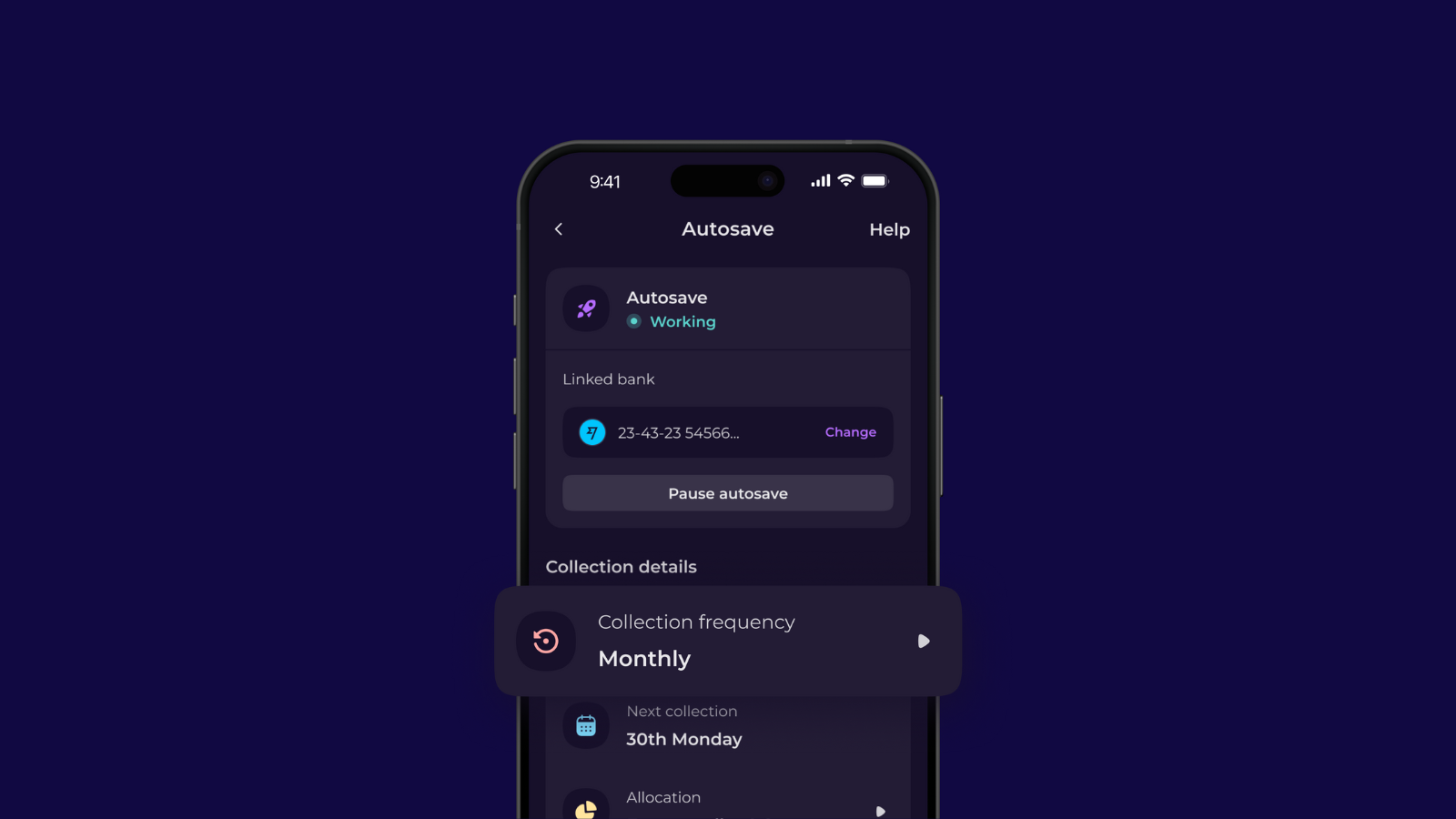FEATURED ARTICLE
How To Calculate Your Personal Inflation Rate

Rebekah May
March 5, 2021 •4 min read
TABLE OF CONTENTS
What Is Inflation?
What Is Personal Inflation?
How To Calculate Your Personal Inflation Rate:
How To Manage Your Personal Inflation Rate:
Summary:
Personal Inflation Rate is a calculation you can use to determine whether you’re spending more money than last year. Understanding your Personal Inflation Rate can help you make better spending decisions, and ensures you don't get caught in the lifestyle creep cycle.
Before we dive into Personal Inflation is, let's first take a look at the more traditional concept of Price Inflation.
What Is Inflation?
Price Inflation describes the overall increase in prices for goods and services over a time period that corresponds with a decrease in the value of money.
Inflation impacts us all - as consumers, savers and investors. But, ultimately it means our money buys us less.
For a consumer, something that cost £100 in 2020, might cost us £101 in 2021. For a saver, inflation will shrink the value of the interest you earn. And for an investor, inflation could even impact the interest rate on a given fixed rate bond.
This type of inflation is calculated in various ways, but the most common ways are the Consumer Price Index (CPI) and the Retail Price Index (RPI). These indexes look at the costs of a basket of goods and services thought to represent what the population is spending their money on. Normal things like olive oil, exercise leggings, and moisturizer, to name a few.
The average price of these items is then compared to a previous year. As of January 2021 the UK inflation rate was 0.9%, which means the things we buy are, on average, 0.9% more expensive than last year.
If your salary does not increase each year in line with inflation, you are effectively earning less money than you were the year before. If you’re also spending more money than the year before, you’ll find it increasingly difficult to build wealth.
What Is Personal Inflation?
While Price Inflation is useful in identifying whether goods and services are increasing in price, it doesn’t address whether you’re seeing price increases in your own household.
As mentioned above, Personal Inflation Rate is therefore a calculation that helps you understand whether your spending has increased or decreased over time.
This is helpful because you might not notice that you’ve gradually started spending more on your groceries, fuel, or household bills if you only review your spending month by month. This calculation is therefore particularly good at spotting any long term spending trends.
Understanding how your Personal Inflation Rate has changed over time can also reduce the possibility of “lifestyle creep” - a term used to describe how your spending habits change as you earn more money.
There’s nothing wrong with spending more money after a pay rise, but lifestyle creep assumes that you’re spending extra cash on miscellaneous items rather than building wealth. Here’s how you can start calculating your Personal Inflation Rate.
How To Calculate Your Personal Inflation Rate:
To calculate your Personal Inflation Rate, use the following equation:
Personal Inflation Rate = cost of personal expenses in one year / cost of personal expenses in a previous year
For example:
- In 2020 your expenses equalled £21K
- In 2019 your expenses equalled £20K
- Your Personal Inflation Rate is therefore £21K / £20K = 1.05 (or, 5%)
This calculation shows that you’ve spent 5% more money than last year.
If you wanted to look into this in more detail, you could use the same equation to calculate your Personal Inflation Rate for every area of your spending.
This way you can find out if you’re spending more money on fuel, clothes, and groceries than last year. Or if your recurring expenses like internet, car insurance, and phone bills have increased.
How To Manage Your Personal Inflation Rate:
In some ways, you have little control over your Personal Inflation Rate. The cost of goods and services increase or decrease in line with the economy and often you can’t do much about it.
However, if your Personal Inflation Rate has increased above and beyond that of current Price Inflation and you’re experiencing “lifestyle creep” then you know you’re simply spending more money.
In this instance, taking control of your Personal Inflation Rate means you can continue building your savings and ultimately reach your big financial goals.
We might crave convenience and comfort, but spending more money as we earn more money doesn’t lead to long-term wealth. Here are a few ways you can maintain your personal inflation rate.
1. Be aware of your spending: Make careful decisions surrounding your spending, asking yourself if you need it, want it, and can afford it.
2. Stick to a budget: Create a budget so you know how much money you can spend each month on certain things like groceries, shopping, and entertainment.
3. Do the math: Any time you get a pay rise, work out how much extra money you’re actually getting each month. Your first instinct when you get a rise is to splurge, but sometimes a modest raise doesn’t give a dramatic boost to the amount of money you have to spend.
4. Set up automatic savings: The easiest way to save money is to automate it. Automating it means you won’t have to make the decision to save on a regular basis. Doing this also means you don’t have the option to spend more money than you have - so your personal Inflation Rate won’t increase.
Summary:
Understanding your Personal Inflation can help you make the right financial decisions. Track your spending and set budgets using a money management app like Emma and remember to review and compare your inflation rate at least once a year.
You may also like
Check out these related blog posts for more tips
© 2025 Emma Technologies Ltd. All Rights Reserved.
Emma is registered and incorporated in England and Wales.
Emma Technologies Ltd is an appointed representative of RiskSave Technologies Ltd, which is authorised and regulated by the Financial Conduct Authority (FRN 775330).
Payment services (Non MIFID or Deposit related products) for Emma Technologies Ltd are provided by The Currency Cloud Limited. Registered in England No. 06323311. Registered Office: Stewardship Building 1st Floor, 12 Steward Street London E1 6FQ. The Currency Cloud Limited is authorised by the Financial Conduct Authority under the Electronic Money Regulations 2011 for the issuing of electronic money (FRN: 900199). For more detail on how your money is protected please see here. You can also find Currency Cloud's Terms of Use here.
Emma Technologies is an Introducer Appointed Representative of Quint Group Limited and not a lender. Quint Group Limited is authorised and regulated by the Financial Conduct Authority (Firm Reference Number 669450). Monevo Limited is an Appointed Representative of TransUnion International UK Limited. TransUnion is authorised and regulated by the Financial Conduct Authority (Firm Reference Number 737740). Emma Technologies introduces customers first to Quint Group Limited, as a licensed credit broker, who then refers on to Monevo Limited.
Emma is registered with the Financial Conduct Authority under the Payment Services Regulations 2017 for the provision of payment services.
Financial Conduct Authority Reg Nr: 794952.
Company Registration Number: 10578464.
Data Protection Registration Number: ZA241546.
All testimonials, reviews, opinions or case studies presented on our website may not be indicative of all customers. Results may vary and customers agree to proceed at their own risk.
Resources: Cancel subscriptions, Cashback offers, Who charged me, Rent Reporting, Budgeting, Investment universe, Emma vs Moneyhub.
Featured cashback offers: Samsung, SimplyCook, NordVPN, Audible, M&S Homeware.









